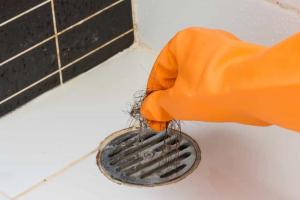Mastering the Art of Shower Drain Removal: A Step-by-Step Guide

-
Quick Links:
- Introduction
- Understanding Different Types of Shower Drains
- Tools You'll Need
- Step-by-Step Guide to Remove a Shower Drain
- Troubleshooting Common Issues
- Case Studies and Real-Life Examples
- Expert Insights and Tips
- FAQs
- Conclusion
Introduction
Removing a shower drain may seem like an intimidating task, but with the right knowledge and tools, it's a manageable DIY project. This article will guide you through the entire process, ensuring you can tackle this home improvement task with confidence. Whether you're replacing a worn-out drain or clearing a clog, understanding how to properly remove a shower drain is essential.
Understanding Different Types of Shower Drains
Before diving into the removal process, it's crucial to understand the various types of shower drains you might encounter:
- Standard Shower Drains: These are the most common and usually have a removable cover and a strainer.
- Tile-Insert Drains: Designed to be flush with the floor, these drains require removing the tile to access.
- Linear Drains: Long and narrow, these drains run along the shower’s edge and may require different removal techniques.
Tools You'll Need
Gather the following tools before starting your project:
- Drain wrench or pliers
- Flathead screwdriver
- Utility knife
- Bucket or container
- Towel or rag
- Gloves (for hygiene)
- Safety goggles (for eye protection)
Step-by-Step Guide to Remove a Shower Drain
Follow these detailed steps to successfully remove your shower drain:
Step 1: Prepare the Area
Clear the shower area of any personal items. Place a towel or rag around the drain to catch any debris.
Step 2: Inspect the Drain Cover
Check if the drain cover is screwed or simply lifted off. Use a flathead screwdriver to remove screws if present.
Step 3: Remove the Drain Cover
Carefully lift off the cover. If it's stuck, gently pry it using a flathead screwdriver.
Step 4: Disconnect the Drain Assembly
If your drain has a visible connection to the plumbing, use a drain wrench to unscrew it. For tile-in drains, you may need to cut away the tile.
Step 5: Clean the Area
Once removed, clean any debris or buildup around the drain area to ensure a smooth installation of the new drain.
Troubleshooting Common Issues
While removing a shower drain is straightforward, you might encounter some common issues:
- Rusty Screws: If screws are rusted, apply penetrating oil and let it sit for at least 15 minutes.
- Stuck Drain Cover: Use a heat gun or hairdryer to warm the area and loosen any adhesive.
- Cracked Drain Flange: If you notice cracks, replace the flange along with the drain.
Case Studies and Real-Life Examples
Here are some real-life scenarios of homeowners who faced challenges when removing their shower drains:
- Case Study 1: A homeowner struggled with a tile-in drain that had adhesive. After using a heat gun, they successfully removed it.
- Case Study 2: A family faced rusted screws but managed to remove them using penetrating oil, leading to a successful replacement.
Expert Insights and Tips
We consulted plumbing experts for their top tips on shower drain removal:
"Always wear safety goggles and gloves when working with plumbing. It’s better to be safe than sorry!" - John Doe, Master Plumber.
Additionally, consider the condition of your plumbing before proceeding. If you're unsure, consult a professional.
FAQs
1. How often should I clean my shower drain?
It’s recommended to clean your shower drain every 1-3 months to prevent clogs.
2. What can I use to unclog my shower drain?
You can use a mixture of baking soda and vinegar or a commercial drain cleaner.
3. Is it necessary to replace the drain when removing it?
Not always. If the drain is in good condition, you can reuse it after cleaning.
4. Can I remove a shower drain without professional help?
Yes, with the right tools and guidance, it’s a manageable DIY project.
5. What if I break the drain while trying to remove it?
If the drain is broken, you'll need to replace it. Ensure to remove any remnants before installing a new one.
6. Do I need special tools for shower drain removal?
Typical household tools like a screwdriver and pliers are usually sufficient.
7. How long does it take to remove a shower drain?
The process typically takes about 30 minutes to an hour, depending on the type of drain.
8. Are there any safety precautions I should take?
Always wear gloves and goggles for protection, and ensure the area is dry to avoid slips.
9. What should I do if water leaks from the drain?
If you encounter leaks, turn off water supply and consult a plumber if necessary.
10. Can I install a new drain myself?
Yes, as long as you follow the manufacturer's instructions and use the correct tools.
Conclusion
Removing a shower drain can be a straightforward task with the right guidance and tools. Whether you’re upgrading your plumbing or tackling a clog, this guide has provided you with all the necessary steps and insights. Always remember to prioritize safety and consult a professional if you encounter any challenges.